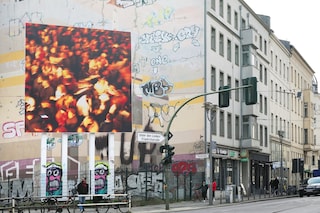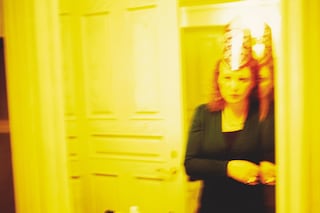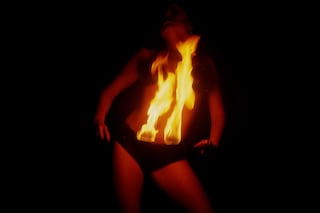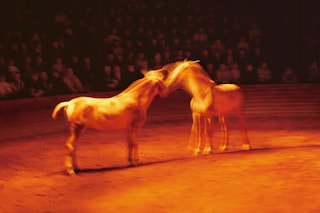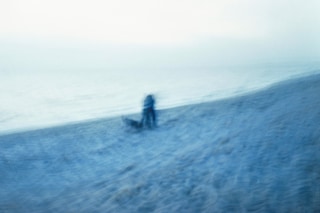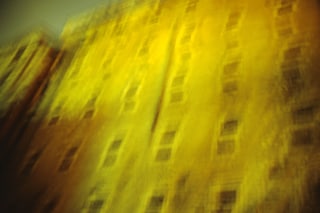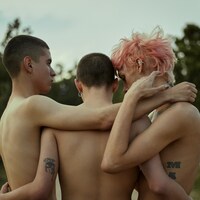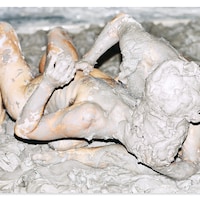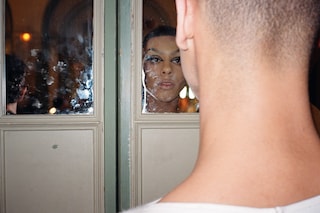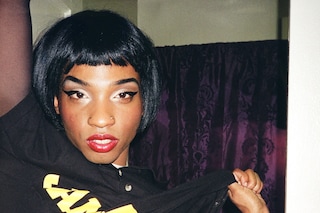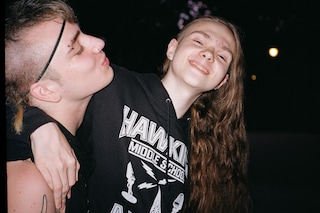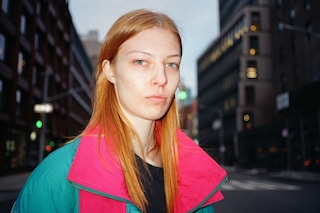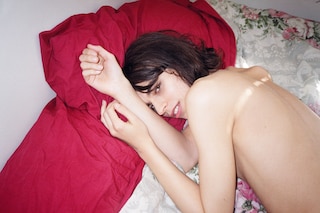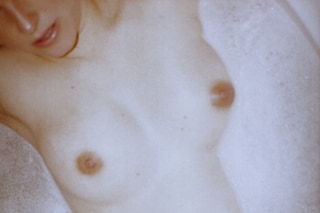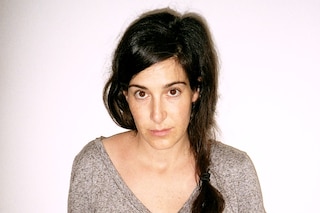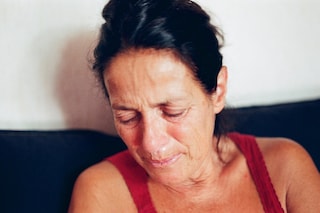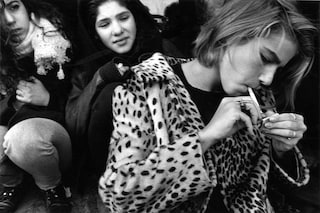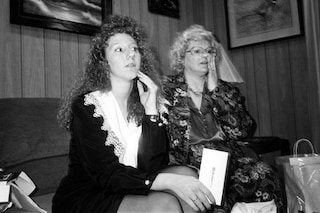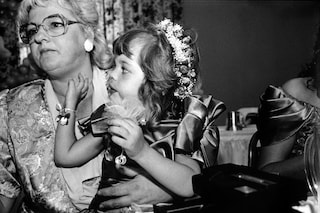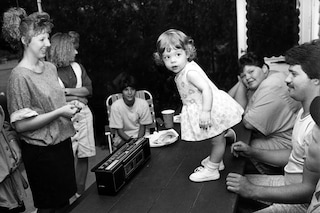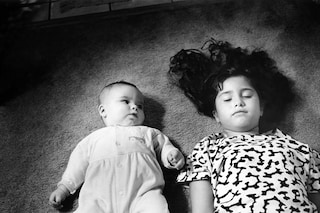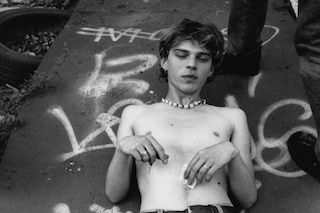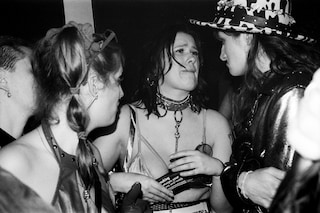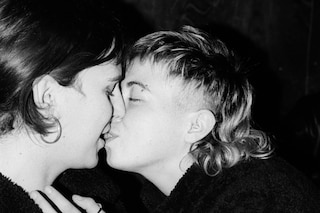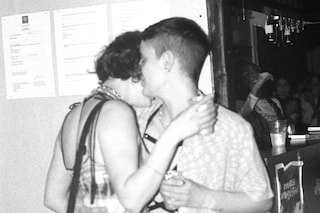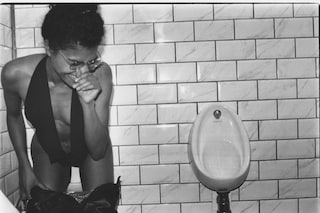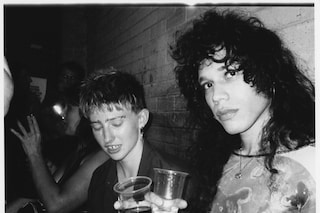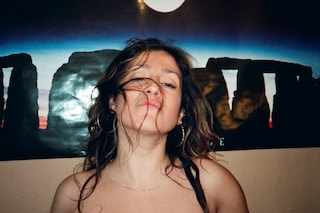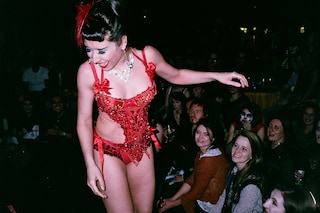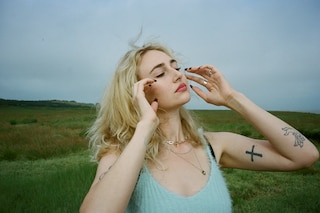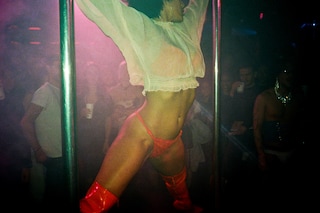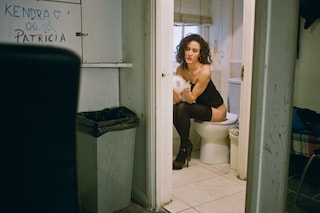Five image-makers explain their complicated artistic and emotional relationships with Nan Goldin’s life and work
Since the 1980s, photographer Nan Goldin has unflinchingly explored life’s fathomless depths, exhilarating horizons, and everything in between. Renowned for their immediacy, emotional intensity, and raw, authentic aesthetic, her intimate portraits of friends, family, and loved ones shy away from neither moments of unbridled joy or abject sorrow.
Her seminal work, The Ballad of Sexual Dependency (a slideshow originally conceived in 1983), forms a deeply personal narrative consisting of over 700 images. It encompasses her lovers, friends, and her fiercely empathetic portrayal of the devastating effects of the AIDS crisis. “The Ballad of Sexual Dependency is the diary I let people read,” Goldin wrote. “The diary is my form of control over my life. It allows me to obsessively record every detail. It enables me to remember.”
As an artist who has elucidated so many difficult, traumatic experiences – such as domestic violence, grief, bereavement, and alienation – she’s also crystalised and enshrined some of the most joyful and optimistic. Eden and After (2014) explores Goldin’s enduring fascination with childhood and the innate human wisdom and natural androgyny which she believes children possess. “Children are from another planet. Babies come from somewhere else,” she once explained. “They’re closer to whatever it is that we come from and where we’re going. They know more in those years. And then they’re taught to forget.” She related a story that she had heard from a friend about a four-year-old child who asked a tiny infant: “Baby, do you remember God? Because I’m beginning to forget.”
Now, a selection of her work will be exhibited in Berlin, occupying the busy intersection of Friedrichstrasse and Torstrasse. The installation, displayed as part of Neuer Berliner Kunstverein’s Billboard series, will be accompanied by an atmospheric sound piece composed by Soundwalk Collective (Stephan Crasneanscki and Simone Merli). Among the images on display will be “The Crowd, Paternò (2004), an image chosen by Goldin from Memory Lost (2019-2021) in which she excavates the complexity of memory, the horror of addiction, and her “narrow” escape after becoming dangerously dependent on the notorious prescription drug OxyContin.
Having influenced succeeding generations of image-makers to document the truth of their own communities, enlarge empathy and understanding of lives lived on the margins, or confront the difficulties and trials of their own complicated realities, Nan Goldin is one of the most significant and influential artists of her time. As her images go on display in this prominent public installation, we speak to five photographers who, in their own unique ways, have all drawn from Nan Goldin’s life, work, and attitude.
MARIE TOMANOVA
“Nan Goldin feels almost mystical to me… or maybe it is mythological, something that is almost beyond reality. But that almost makes no sense as her work is also so real and honest – and that is what I connect to, deeply. Nan’s work moves me, and that is what I really want from art – to connect and to be moved. I want my spirit to be moved.
“I saw Ballad of Sexual Dependency in 2015 at the Whitney. I cried. And I felt it for the next few days – I couldn’t get away from it. She brought close, side-by-side, living and loss. It overwhelmed me and left me disturbed. There was everything there, just laid bare. Life… all of the pieces, the moments. I was in MoMA in spring 2017, and I saw the Ballad was there but I stood on the periphery of it, I couldn’t stay, I couldn’t get too pulled in because I didn’t feel like I had it in me at the time. And this is the most beautiful thing. I don’t know if any other work does that to me, makes me feel like that, moves me to the point that I need to be careful around it.”
Follow Marie Tomanova on Instagram for updates on upcoming exhibitions
ANDI GÁLDI VINKÓ
“Beyond loving her work, there’s something about her that I feel most connected to... She is just genuinely so cool, such a legend. Her voice, her looks. Zero fucks given. It’s deep and honest, and loving.
“It’s crazy how shallow and superficial everything seems compared to her work. I need to be reminded more often where real art is, and it’s definitely not on Instagram. There’s something about her images that are so raw. Even with today’s trending feminism, it’s always gentle and soft and sexy-ish but nothing with that kind of truth or honesty.
“Maybe even, without realising, I was always unconsciously inspired by her. If I am to show my friends in my work, I felt the same kind of need to include myself in my work, in order for them to trust me. And I always felt, like her, that my work is motivated by a desire to remember. Or even to share universal feelings that derive from my personal experiences of womanhood. But it’s interesting that I guess, because it’s true we now live in a way more conservative world than what she lived in, I use the snapshot aesthetics to construct images that are often created in my mind – no one around me is naked or happy or confident anymore.
“I love her work Eden and After, about the kids. I love what she says about how there is no joy anywhere. And it’s true, we control our kids so much. I’m trying not to, but society really expects you to have your child quiet and well-educated and conservative... and all the fear from melting permafrost and nuclear wars and viruses and climate catastrophes, I’m not even sure what to teach them? Just art?”
Follow Andi Gáldi Vinkó on Instagram for updates on upcoming exhibitions
KAREN MARSHALL
“Nan allows her viewers to see the messiness of life in conjunction with the importance of community and friendship. Life can be sloppy and beautiful at the same time.
“I like looking at other people’s familial relationships, not just those that are close to me. Nan’s world is often theatrical and I perhaps am more interested in more of the mundane ways of the everyday than Nan… but we both have the ability to be there in the frame and yet disappeared at the same time.
“The appearance of her book and the slideshow [The Ballad of Sexual Dependency] in the mid-1980s reassured me that I was not alone in how I was looking at my work in terms of long-form sequence. I had already started experimenting with making slide shows and playing with visual sequences and experimenting with how music influenced the still image when seen together. It was affirming to see that others had also taken this on, and it was great to see work that looked at the inner world of the familial. I was also struck by the importance of colour in Nan’s work. Her palette took on new meanings that I hadn’t seen before in quite this way…the palette and the light in harmony with the moment at hand.”
Follow Karen Marshall on Instagram for updates on upcoming exhibitions
HEATHER GLAZZARD
“If I had to sum up Nan Goldin’s work in five words, I’d say, real, raw, love, honest, emotional. I feel deep like-mindedness to her obsession with shooting her life and recording it. Photography is often super voyeuristic and made by people who have no connection to what they’re shooting… as a result, it’s fetishising and tells false stories. Nan Goldin’s work is the opposite of this because she was just documenting her friends and putting on slideshows for them, it wasn’t for brands or clout.
“Nan Goldin captured LGBTQ+ people at a time when not many people were, or if they were, it wasn’t in a way they deserved. This is something I aim to do through my work. She photographed the same people for years and this is something I’m doing too, with friends. Her work reminds us that, if you’re existing as part of a minority community, there’s a real power in us documenting it through your own experience rather than letting an outsider decide how you’re seen. We have the power to choose how we are seen.”
Read more about Heather Glazzard here and follow their Instagram for updates
BRONWEN PARKER-RHODES
“I first discovered Nan when a family friend showed me the book The Ballad of Sexual Dependency when I was in my late teens. I remember instantly falling in love with the intimate beauty she captured. I definitely feel being exposed to her photography from a young age influenced my own work in a massive way. You get a real sense of the stories surrounding every photo she takes, and I hope my own work does that too. I also love how she captures moments you perhaps wouldn’t necessarily think were worthy of capturing, she shows us the beauty in the traditionally unphotogenic… her images makes the viewer question why we find her pictures alluring, what the circumstances around the photograph were, and the motive for taking the photos in the first place.
“Her work has always resonated with me because so much of it focusses on her friends and community, you can really see and feel the close relationships she has with the people she photographs. It’s the same with my own photography work, especially the photos I’ve taken of my stripping community. Even though I’m behind the camera, it’s my relationship with the subjects that I photograph that I’m really trying to capture.
“What can we learn from Nan Goldin? Just shoot MORE! She has such an incredible body of work, it seems as though she’s shooting all the time and, as a result, her subjects always seem so at ease in front of her lens.”
Follow Bronwen Parker-Rhodes on Instagram for updates
Nan Goldin’s The Crowd, Paternò will be on display in Berlin courtesy of Neuer Berliner Kunstverein until August 28 2022
![Nan Goldin, The Ballad of Sexual Dependency [1986]](https://images-prod.dazeddigital.com/786/azure/dazed-prod/1310/9/1319932.jpg)
